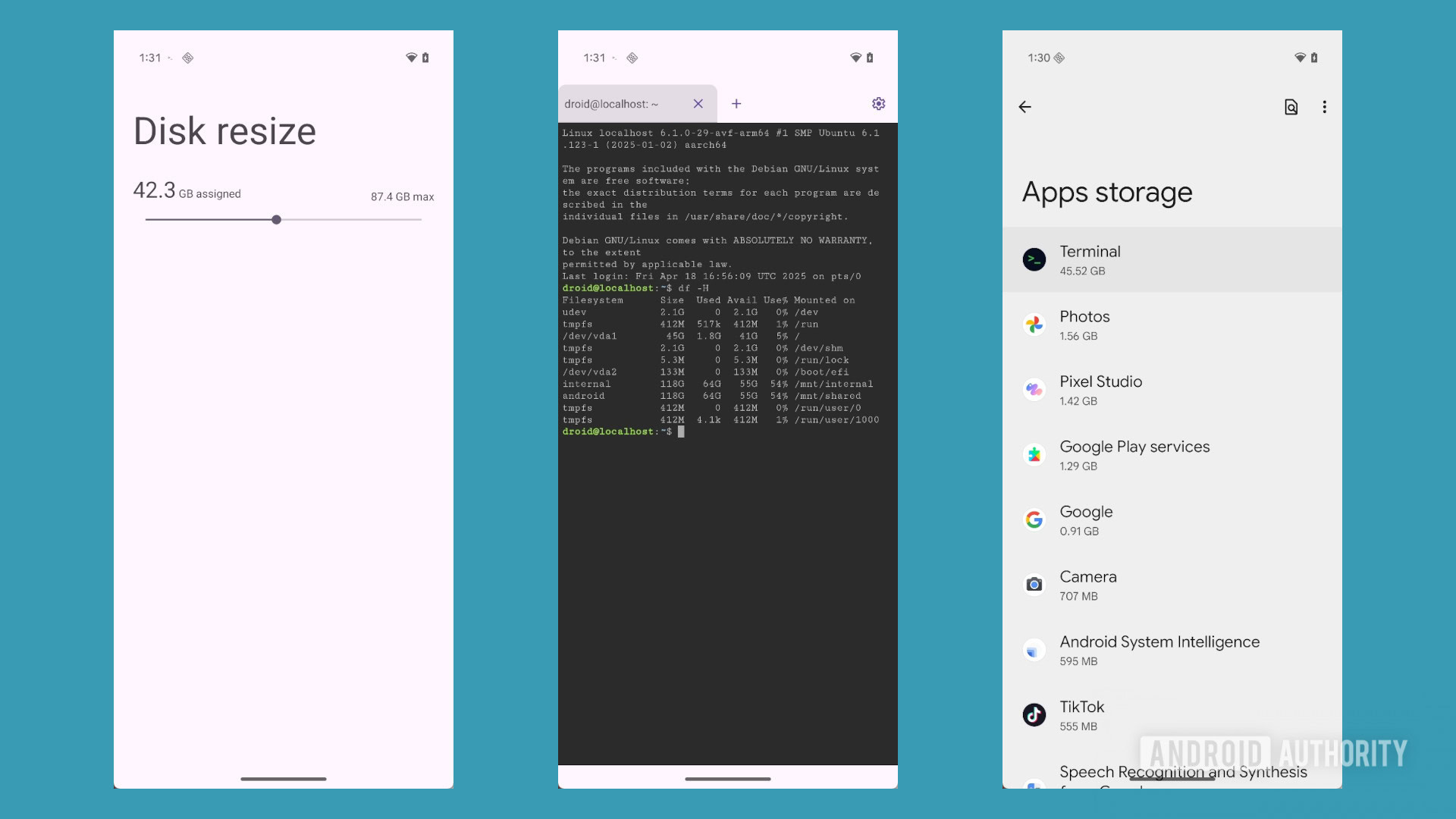
Mishaal Rahman / Android Authority
Tl; Dream
- Pixel phones now have a Linux terminal app, so users can run a Debian virtual machine for desktop apps with Android.
- While it is still missing features such as GUI/Audio, the recent Android 16 Beta 4 release removes the previous 16 GB storage cap for the Linux World Cup.
- Google plans to eventually replace manual storage size with dynamic balloon, so the World Cup storage can automatically adjust based on needs.
You read one Authority insight history. Discover Authority insight For more exclusive reports, you can demolishes, leaks and thorough technical coverage you do not find anywhere else.
With the release of the fourth Android 16 Beta, Google has not caught the slider in the Linux Terminal app. In previous releases, the disk size was revealed to 16 GB. IN Android 16 beta 4However, the disk can be changed to occupy most of the host unit’s remaining storage, leaving 1 GB for free to prevent the virtual machine from using all available space.
I tested this feature on a Google Pixel 9 Pro Runs Android 16 Beta 4, and successful size of the Linux disk to 42.3 GB. The process took only a few seconds, and after restarting the World Cup, the increased storage was immediately available. According to Android’s storage settings, the total size consumed by the Linux Terminal app (including the Base app and the changed World Cup disc) grew to approximately 45.52 GB.

Mishaal Rahman / Android Authority
In a future release, Google plans to remove the sliding switch for the Linux terminal app. Instead, the app will use storage balloon to dynamically adjust the storage space available for the Debian World Cup. This feature allows Guest VM’s storage “blow up” to use available space and “deflate” when the host system needs to regain it. This approach provides two important benefits: the storage assigned Debian does not need to be fixed in advance, and it protects the host from running out of space by automatically shrinking the guests’ available storage when needed.
Google quickly improves the Linux Terminal app and recognizes its key role in the company’s plans for Transition Chrome OS to an Android -Base. Although the app theoretically allows to run full-fledged Linux desktop environments, says Google The primary purpose of the terminal is to activate Linux apps with Android apps, not to replace Android’s original desktop mode. Still, Google’s efforts will unlock some exciting things, and it will be fascinating to see the innovative ways users take advantage of the Linux terminal on their pixels as the app matures.


